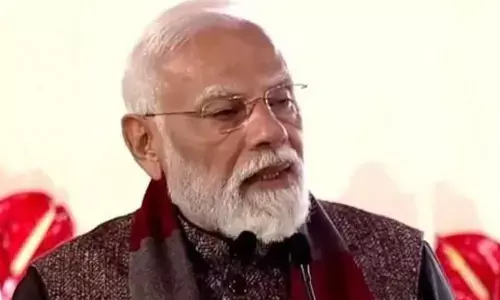Science Diplomacy for Peace

In tumultuous times, science diplomacy can help keep the world stable — if we let it.
Since 2010, the U.S. Science Envoy Program has sought academics to help with foreign policy goals, such as getting more women scientists around the world and protecting research transparency. When re-joining the Paris Climate agreement in 2021, U.S. Secretary of State Antony Blinken said that “climate change and science diplomacy can never again be ‘add-ons’ in our foreign policy discussions”
In December of 1951, at a time of high tension in Europe, representatives from twelve nations met in Paris and agreed to create a new, international center dedicated to peaceful nuclear research. Three years later, it officially launched in Switzerland as the Conseil Européen pour la Recherche Nucléaire, or CERN. Its members included two former Axis countries (West Germany and Italy) along with Yugoslavia and the United Kingdom, all treated as equals. European politicians applauded a project that prevented brain drain to the United States; scientists celebrated the opportunity to collaborate on some of the biggest questions in physics.
CERN was, and remains, one of the most successful examples of science diplomacy: using collaborative research, rather than guns or economic sanctions, to help nations achieve their goals.
But now, at another time of European tension, science diplomacy faces an uncertain future. Shortly after invading Ukraine, Russia declared it would withdraw from the 15-nation International Space Station. Officials in the United States and the European Union have cut ties with Russian science organizations. Even CERN decided not to renew its cooperation contracts with Russia. A former secretary at the German Ministry of Education and Research tweeted that “to put it bluntly, in the case of a brutal act of aggression that violates international law, there exists no science diplomacy!”
Science diplomacy in the modern sense got its start in the mid-19th century, when professional scientists organized themselves into a large number of national academies. In 1899 several of these groups clubbed together to form the International Association of Academies, hoping to tap into their diplomatic potential. A contemporary editorial in the journal Nature said the new association proved science “can assert itself even when the political atmosphere is not unclouded.” The International Association of Academies went bankrupt in 1913 due to lack of funding, however.
After World War I, scientists from the former Allied nations formed the International Research Council and managed to expand their membership to the former Central Power countries. This effort also faltered, unfortunately. Allied leaders worried that the Council might contradict their post-war foreign policy. When the Central Power countries eventually did join, they were embittered by their slow admission process, with many German academics turning down their invitations. The council collapsed in 1931.
Scientists finally managed to wield meaningful diplomatic power after World War II, when the creation of CERN was the first in a string of successes. To promote collaboration, the International Council of Science Unions proposed making 1957-58 the “International Geophysical Year,” ultimately drawing 67 nations into the project to study Earth as a single system. At a time of overlapping national claims in Antarctica, the Council also encouraged all parties to focus instead on scientific exploration there. The effort worked, as countries competed to see which could build the most impressive base. In 1959, the U.S., U.S.S.R., and ten other nations signed the Antarctic Treaty, stipulating that all activity there would be peaceful. It arguably became the first arms-control agreement of the Cold War.
As part of a backlash against globalization, countries are increasingly exploiting international science for nationalist goals.
The U.S.-Japan Committee on Science Cooperation was another notable success in uniting former enemy nations…As part of a broad backlash against globalization, countries are increasingly exploiting international science for nationalist goals…Today, science is increasingly treated as just another strategic element on the geopolitical battlefield. As a result, the world risks losing the tremendous potential of science diplomacy to promote political stability and intellectual advancement. Fortunately, it’s not too late for a revival…
Over the past decade the UK’s Science and Innovation Network has brought local researchers to work alongside the diplomats, touting the benefits to business. Since 2010, the U.S. Science Envoy Program has sought academics to help with foreign policy goals, such as getting more women scientists around the world and protecting research transparency. When re-joining the Paris Climate agreement in 2021, U.S. Secretary of State Antony Blinken said that “climate change and science diplomacy can never again be ‘add-ons’ in our foreign policy discussions.” Science diplomacy is crucial both for maintaining international peace and for advancing science itself. International research collaborations were crucial for understanding the dangers of climate change and for bringing the Covid pandemic under control.
(Courtesy: www.openmindmag.org; Burke is a science writer and editor based in Hamburg)




















